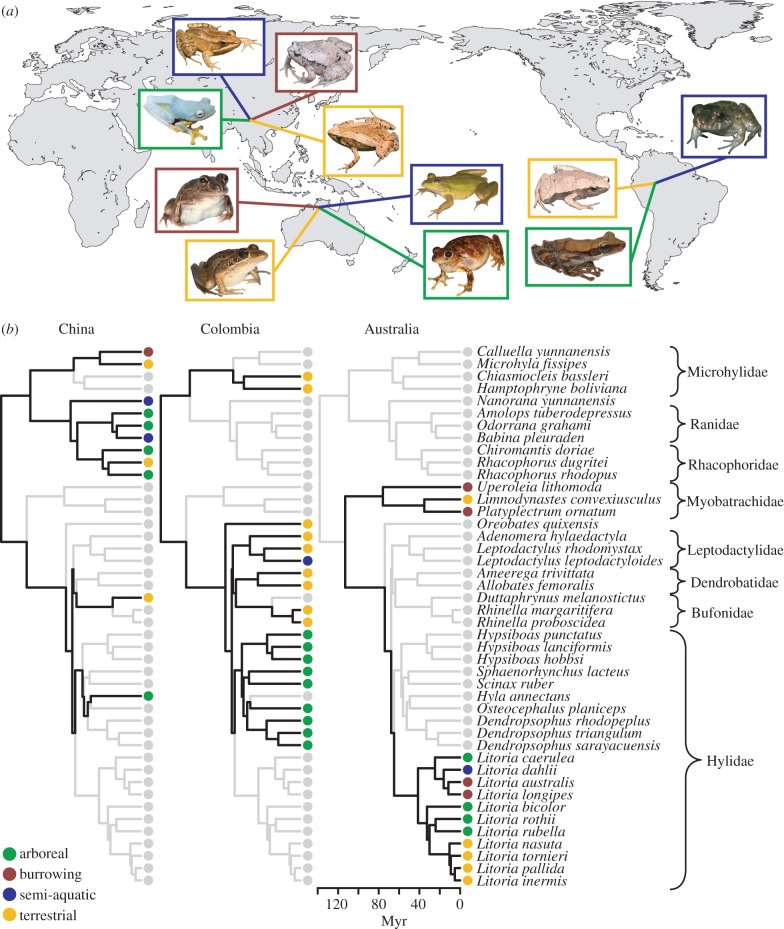Figure 1.
(a) World map showing field site locations and representatives of the frog ecotypes that occur there. Field sites (clockwise from right) are Leticia, Department of Amazonas, Colombia; Middle Point, Northern Territory, Australia and Baoshan, Yunnan Province, China. Microhabitat use of each species is indicated by the colour of the border of its photo: arboreal (green), burrowing (red), semi-aquatic (blue) and terrestrial (yellow). Frog species, clockwise starting from the semi-aquatic species in each location, are: Leptodactylus leptodactyloides, Osteocephalus planiceps and Hamptophryne boliviana (Colombia); Litoria dahlii, Litoria rothii, Litoria nasuta and Litoria longipes (Australia); and Babina pleuraden, Calluella yunnanensis, Microhyla fissipes and Rhacophorus rhodopus (China). Photos from Australia and Colombia were taken by D.S.M., while those from China were taken by Jing Che. Photos are not to scale. (b) Phylogeny, biogeography and microhabitat use of the 44 frog species included in this study. All three phylogenies are the same, with branch lengths (in millions of years; Myr) estimated using the Bayesian uncorrelated lognormal approach in BEAST ([23,24]; see the electronic supplementary material). Families are indicated to the right of species names. Species at a given site are shown with black branches and coloured microhabitat character states, while others are shown in grey. The branch-length scale bar applies equally to all three trees. Three clades show ECD between Colombia and China, as they have species in both regions that share the same microhabitat (Microhylidae, Bufonidae, Hylidae). By contrast, in situ diversification of microhabitat use can be seen in Australia in Litoria, which has species that use each of the four microhabitats despite an ancestor that was seemingly an arboreal specialist.

